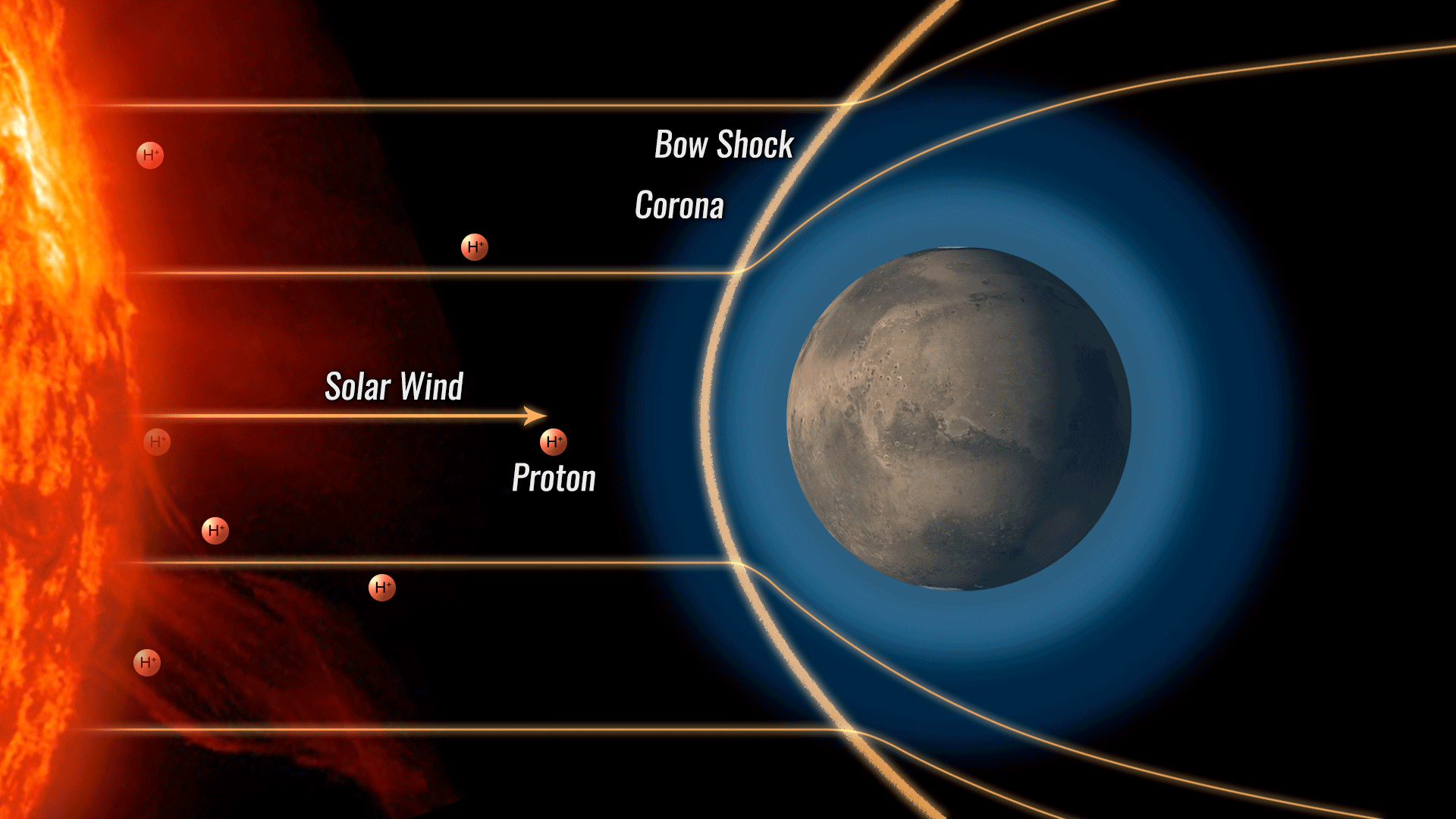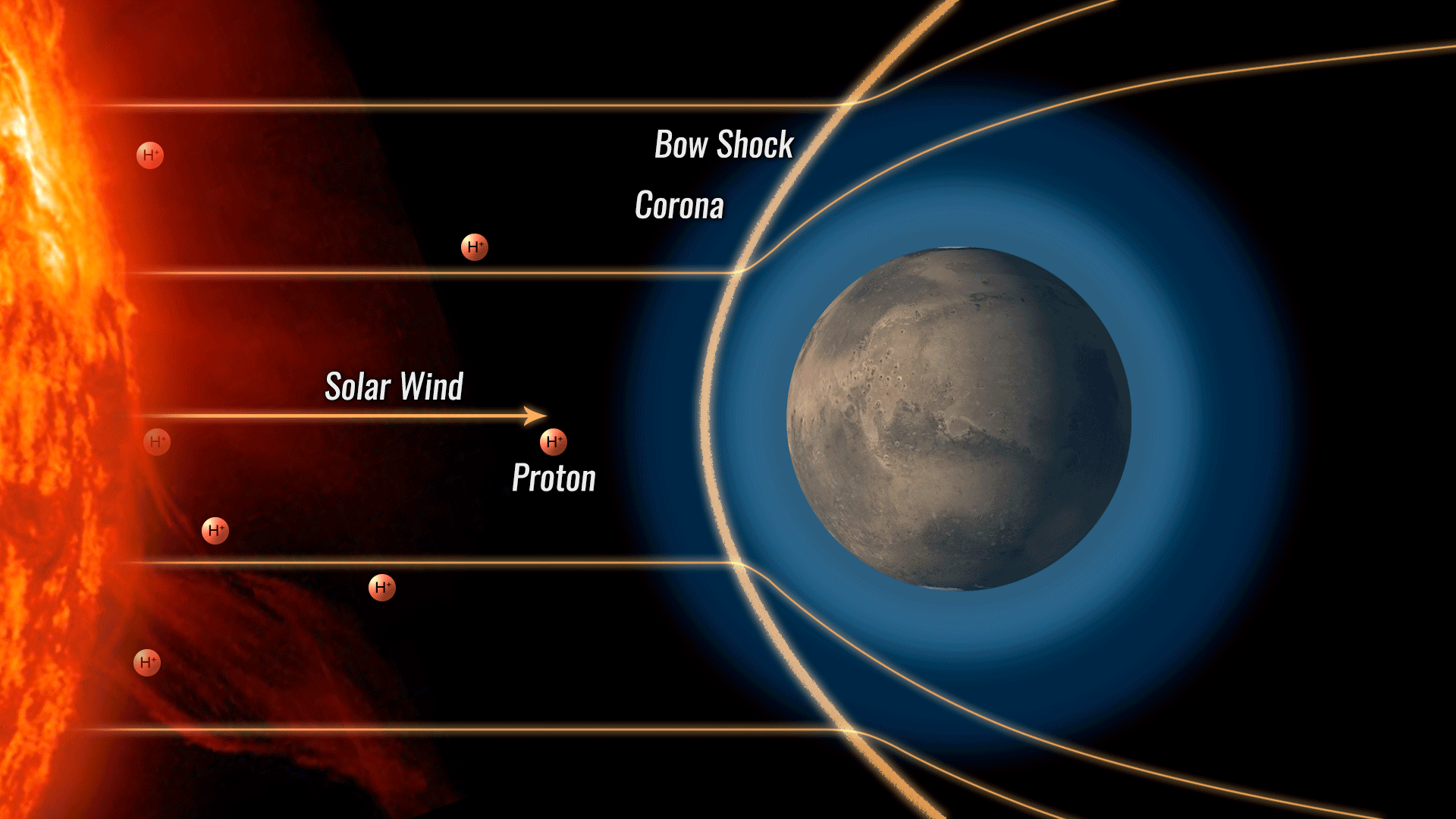Animation of Proton Aurora at Mars

| Credit | NASA/MAVEN/Goddard Space Flight Center/Dan Gallagher |
|---|---|
| Language |
|
This animation shows a proton aurora at Mars. First, a solar wind proton approaches Mars at high speed and encounters a cloud of hydrogen surrounding the planet. The proton steals an electron from a Martian hydrogen atom, thereby becoming a neutral atom. The atom passes through the bowshock, a magnetic obstacle surrounding Mars, because neutral particles are not affected by magnetic fields. Finally, the hydrogen atom enters Mars' atmosphere and collides with gas molecules, causing the atom to emit ultraviolet light.
On Earth, the northern and southern lights occur when the solar wind (electrically charged particles from the Sun) follow our planet's geomagnetic field lines to the poles and collide with the upper atmosphere. Mars lacks a global magnetic field, so instead the solar wind piles up in front of Mars in a bow shock, which blocks charged particles from reaching the bulk of the atmosphere. However, in a process first observed by the MAVEN mission, some solar wind protons can slip past the bow shock by first bonding with electrons from the Mars upper atmosphere to form hydrogen atoms. Because these hydrogen atoms are electrically neutral, they can pass through the bow shock and go on to create an ultraviolet proton aurora on the dayside of Mars.
For more download options: https://svs.gsfc.nasa.gov/12986

